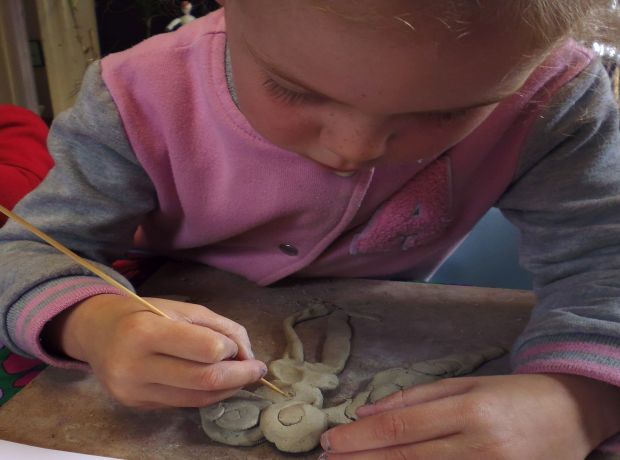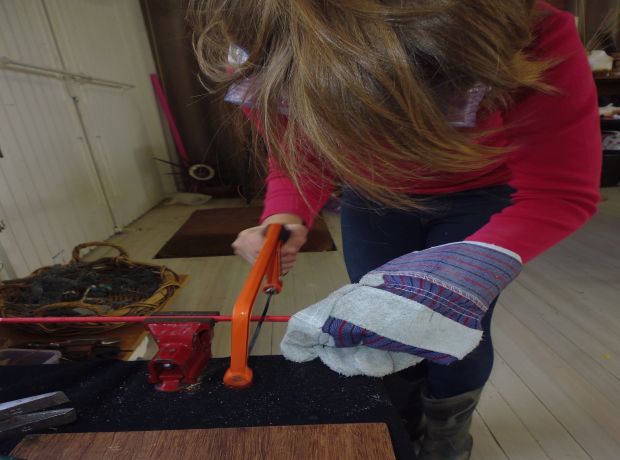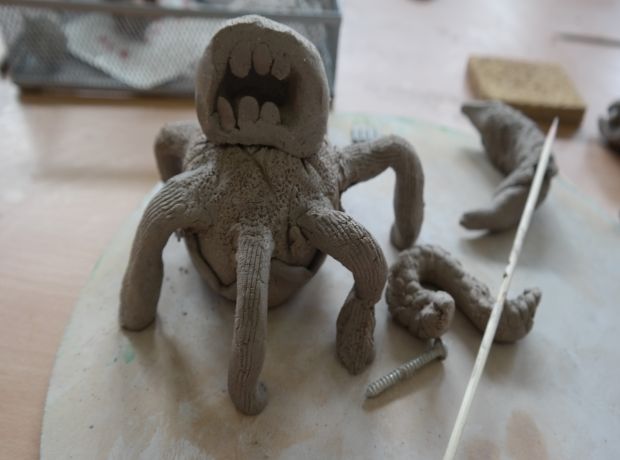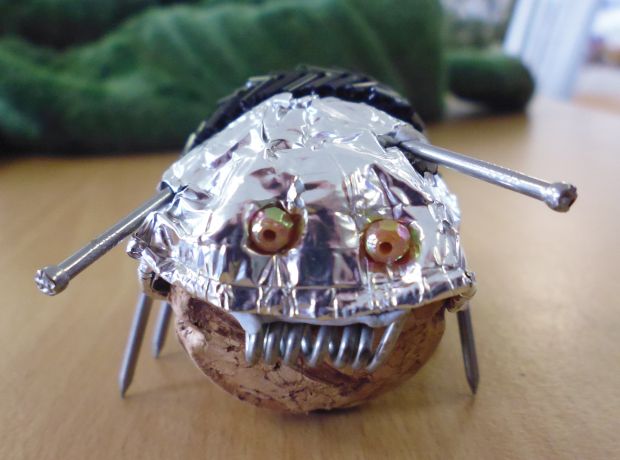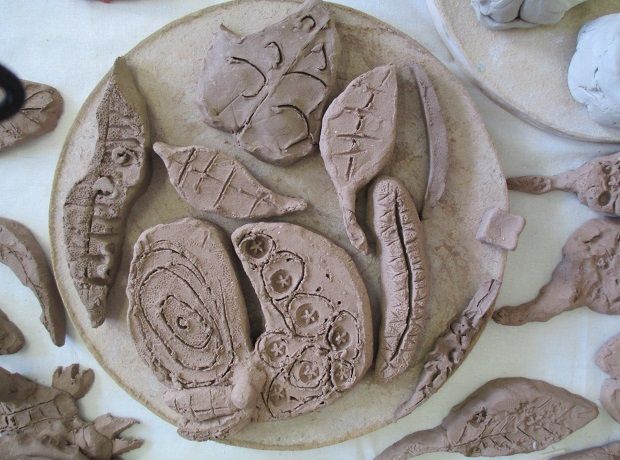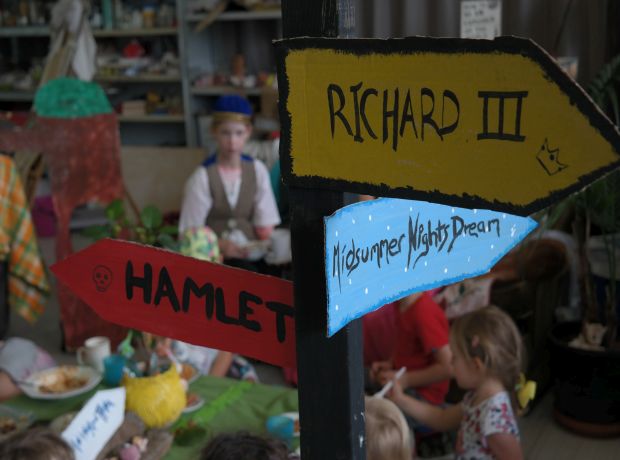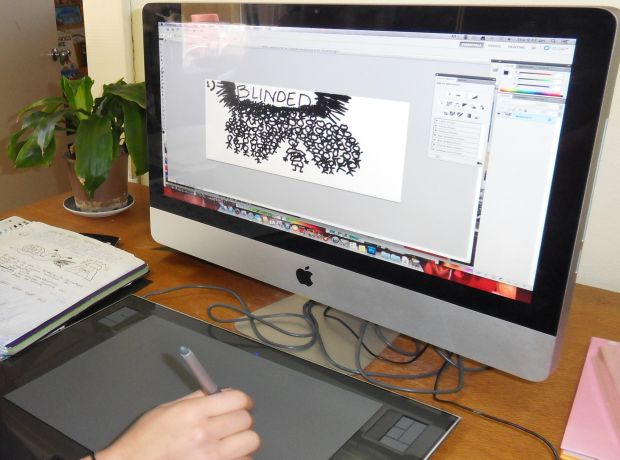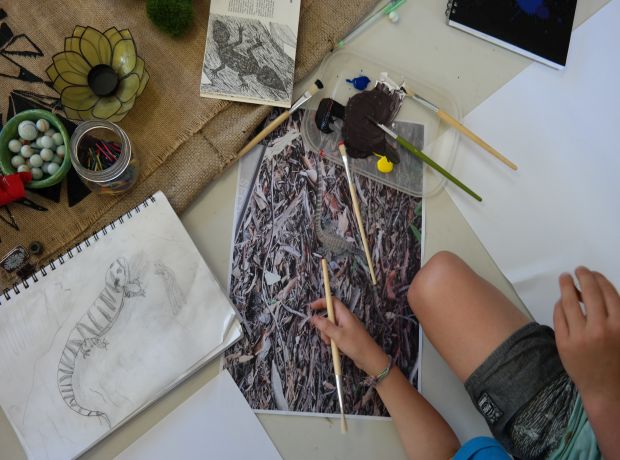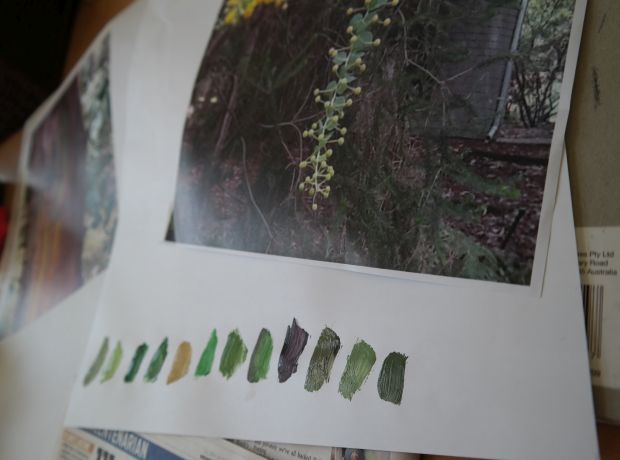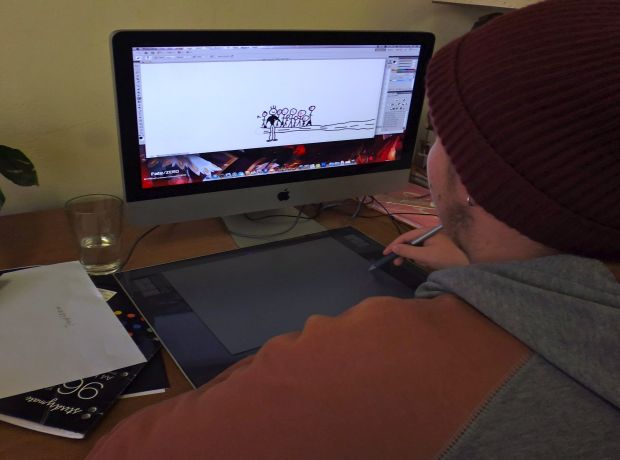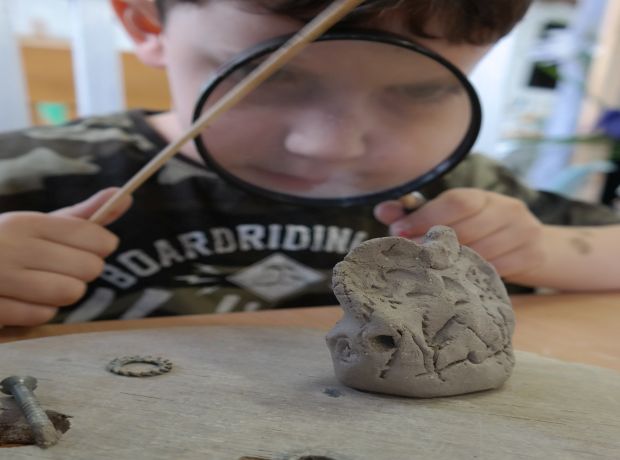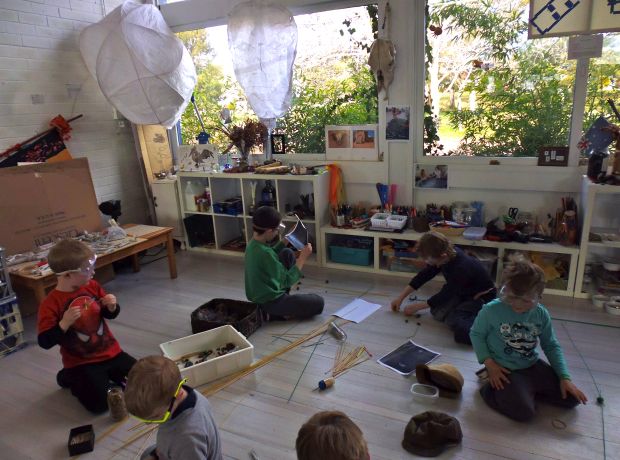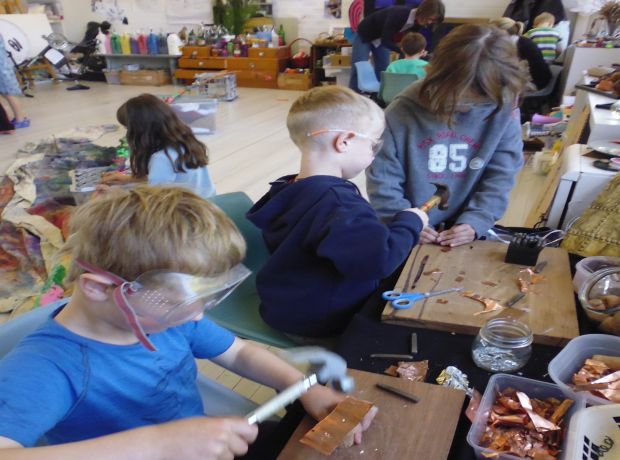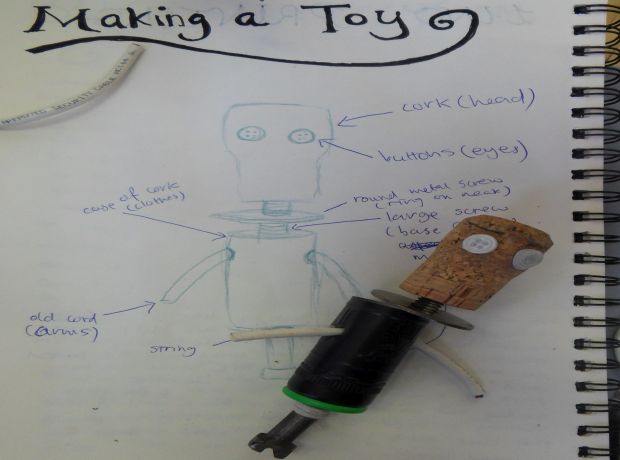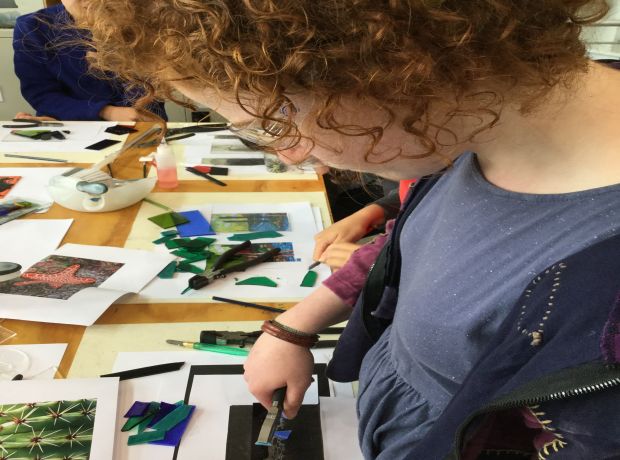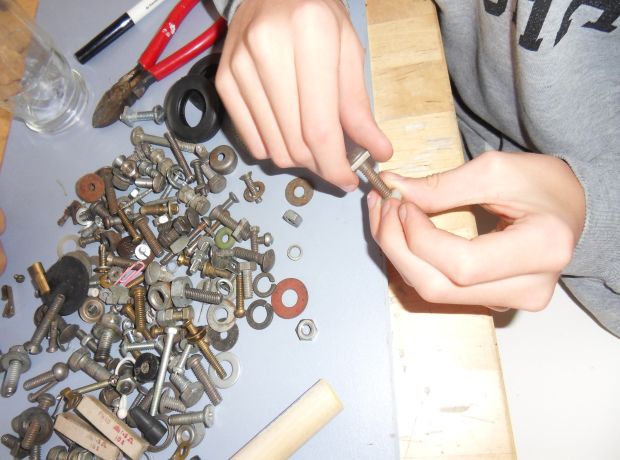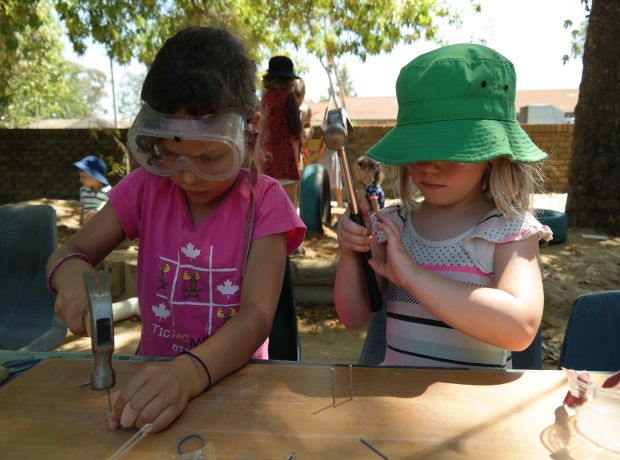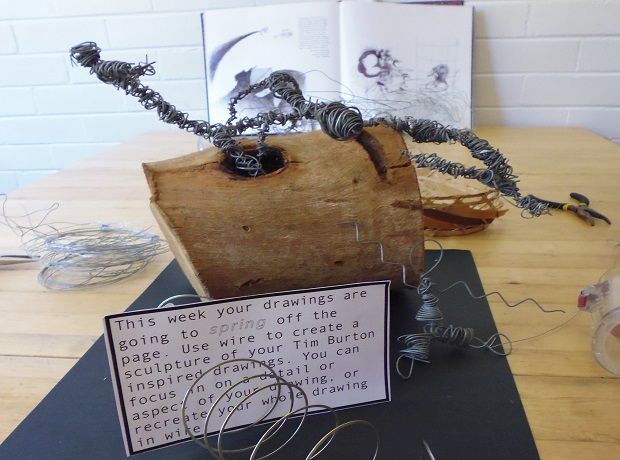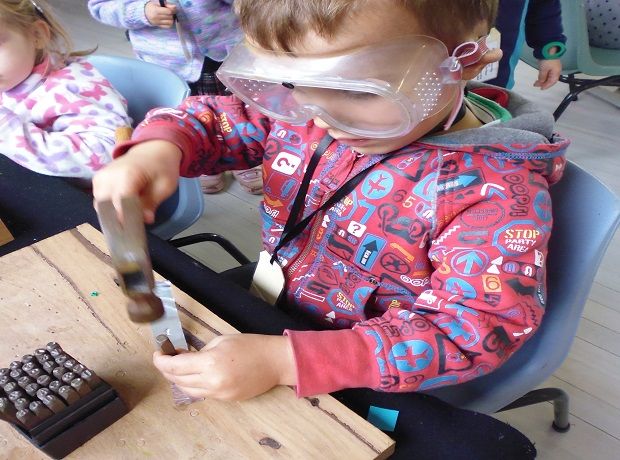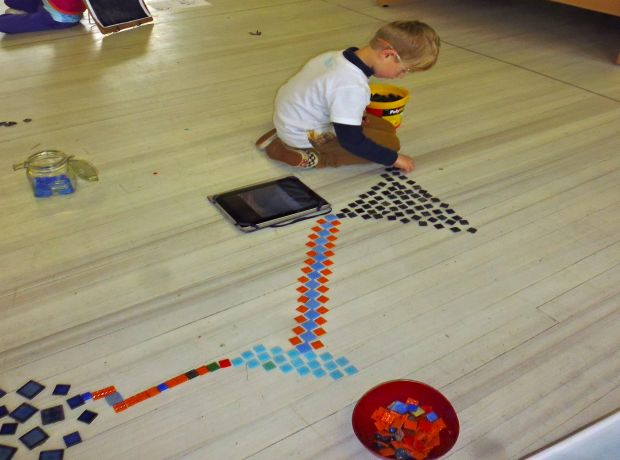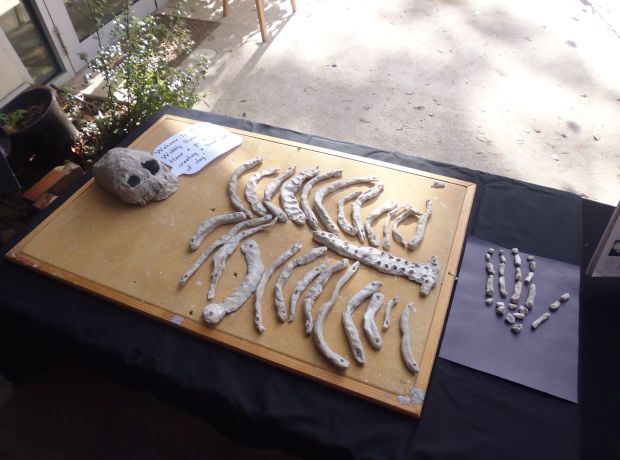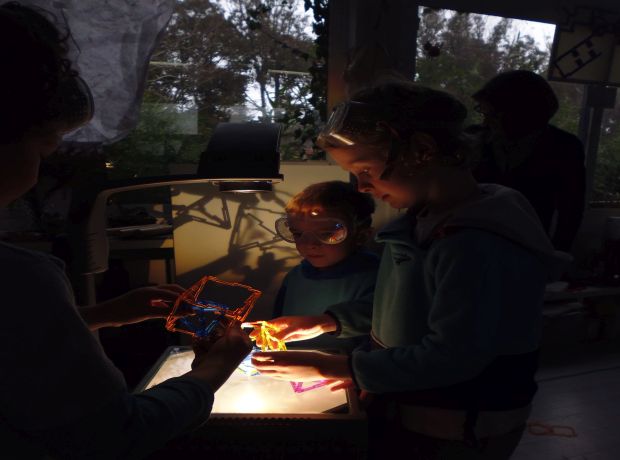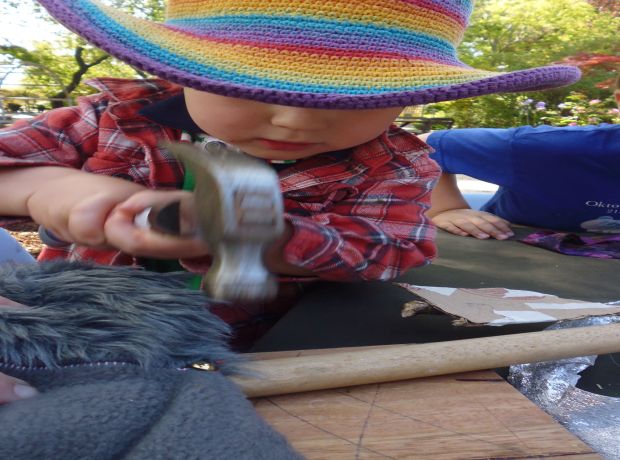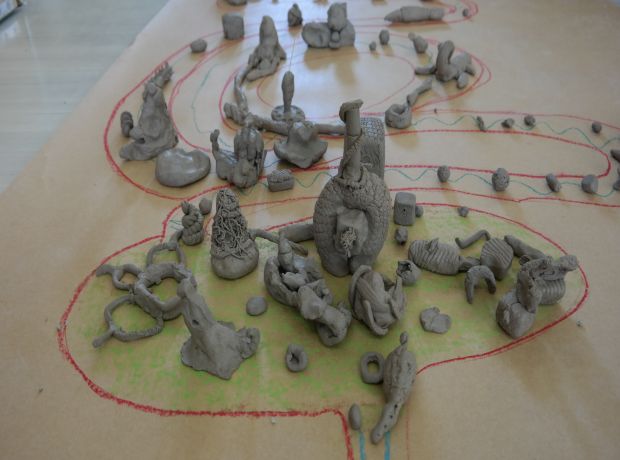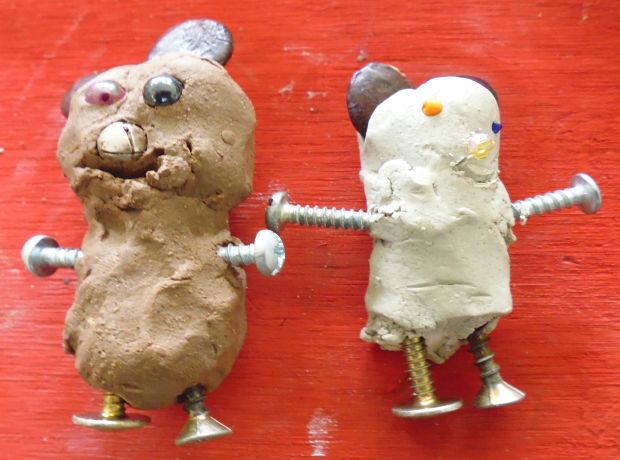“There is no doubt that creativity is the most important human resource of all. Without creativity, there would be no progress, and we would be forever repeating the same patterns.” ~ Edward de Bono
Blue Gum students spend time regularly in a beautiful spacious Art Studio – dubbed “Artyology” by a student who relished immersing herself in creative ventures there. The name stuck.
Artyology is a space in which to wonder, create, experiment, tinker, make and build… and be free to translate dreams into reality.
At any one time, students might be:
…carefully selecting and placing tiles/stones/marbles on a large collaborative mosaic table;
…needle-felting creatures or wet-felting their miniature felt pod homes;
…crocheting flowers to revamp classroom furnishings;
…using clay to mould imagined clay gargoyles or microbes for the international ‘Stepping Up’ Ceramics Triennale, or leaves and vines to encircle the school;
…designing and making costumes and props for their Class’ original performances within the end-of-year Learning Celebration Concert;
…working in small groups storyboarding and producing stop-motion animations;
…experimenting with different mediums, e.g. sculpting with wire and copper;
…sorting and arranging natural materials collected during bushwalks (observing conservation principles) to sketch or transform into art works;
…fusing a glass rainbow to demonstrate how light and colour interact;
…tinkering to generate creations using recycled materials, or pulling things apart to see how they work and reconfiguring them to create something new.
In addition, students pursue creative inspirations and outlets in the broader community. Examples include:
…black-and-white or digital photography at PhotoAccess;
…printmaking at Megalo Print Studios and Gallery;
…ceramics at Canberra Potters’ Society;
…technical drawing and industrial design with Tom Skeehan;
…viewing artworks and having a dialogue with the artist at the ANU’s Drill Hall Gallery.
In 2015, our 3 and 4 year old preschool students explored the National Arboretum Canberra, as part of Blue Gum’s ‘Community Classrooms’ program, visiting the emerging 100 forests again and again. Their discovery of different fungi and birds’ nests triggered their imagination and desire to create their own Forest of 1,000 Mushrooms – a seemingly impossible target! But their determination won through; with the help of the whole school community their dream became a reality – 1,000 unique clay mushrooms were created and appeared fleetingly at the Arboretum (as mushrooms do) before finding permanent homes around Canberra and beyond.
Through the ‘languages’ imbedded in the Arts, students are encouraged to be creative, independent thinkers and makers, who gain an understanding of the importance of risk-taking, perseverance and learning through and from mistakes. They are not simply replicating the work of others, but grappling with challenges and problem-solving as they explore and express their ideas, and ways to make their thinking visible. Sometimes, they will create individually and at other times in dialogue with others – both are important.
“It is the supreme art of the teacher to awaken joy in creative expression and knowledge.” ~ Albert Einstein
Further information –
Sir Ken Robinson’s TED talk – Do schools kill creativity? https://www.ted.com/talks/ken_robinson_says_schools_kill_creativity?language=en
Senator Mitch Fifield, Federal Minister for the Arts. Opening address to the National Visual Art Education Conference, 20 January 2016, Canberra. [extract]:
“The arts is not some luxury. It’s not an add on. It’s not something that’s extra-curricular in an educational sense. The arts is something that should be core to primary and secondary school education… [T]here is inherent value in art. There is inherent value in the creative process. But the arts does provide students with the capacity and the tools and the mechanisms to understand the world around them. To interpret the world around them. And to express what it is that they feel and what they see. And these are skills for life. They’re skills for living… [I]f we want to have a real culture of innovation then we need to have creativity at the heart of that agenda and what we need to do is to put an A into STEM. We need to start talking about STEAM. Science, Technology, Education, the Arts and Mathematics. Because if we want to have a culture of innovation, a culture of creativity feeds directly into that.”


